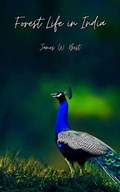"Forest Life in India" is a vivid and engaging account of James W. Best's experiences in the Indian wilderness. It combines adventure, natural history, and cultural observations, offering readers a unique perspective on life in colonial India. The book serves as both a historical document and a personal memoir, capturing a way of life that has long since changed.
-----
Introduction:
It is natural that the main theme of a forest officer's book should be an account of work and sport in the forests that he has visited. I was fortunate in having opportunity to study tiger, buffalo, and bison as well as the many deer to be found in the forests of the Central Provinces of India. Their slaughter was of less interest to me than their pursuit, for which reason I have tried to give so far as possible the point of view of the native hunter, whether as a tracker or as an unarmed beater in a tiger beat, both of which I have experienced.
There is, too, a great human interest in those vast forests of India where man is still primitive, and it is possible to contrast their state with that of the highly developed civilization of the more populated parts of the country. I have given my own experiences of the bribery, extortion, nepotism, and forced labour from which the humble millions of India suffer at the hands of their better-placed fellow-countrymen. A hundred years ago there was talk of the "pagoda tree," and although the officers of the existing civil services of India are as clean in their administration as any to be found in the world, we should not be too ready to throw stones. Perhaps a more representative system of government may improve the lot of the ryot and the forest villager.

